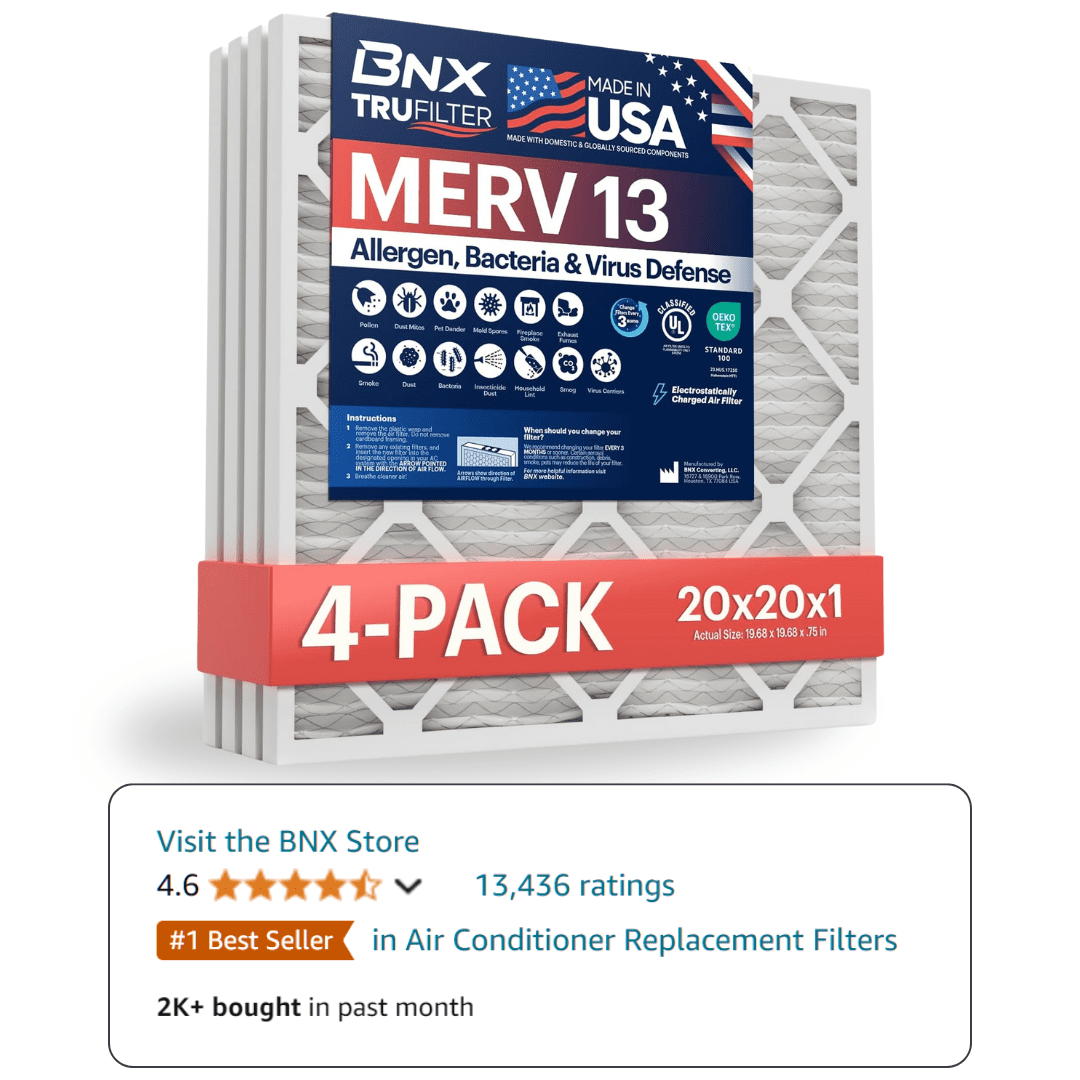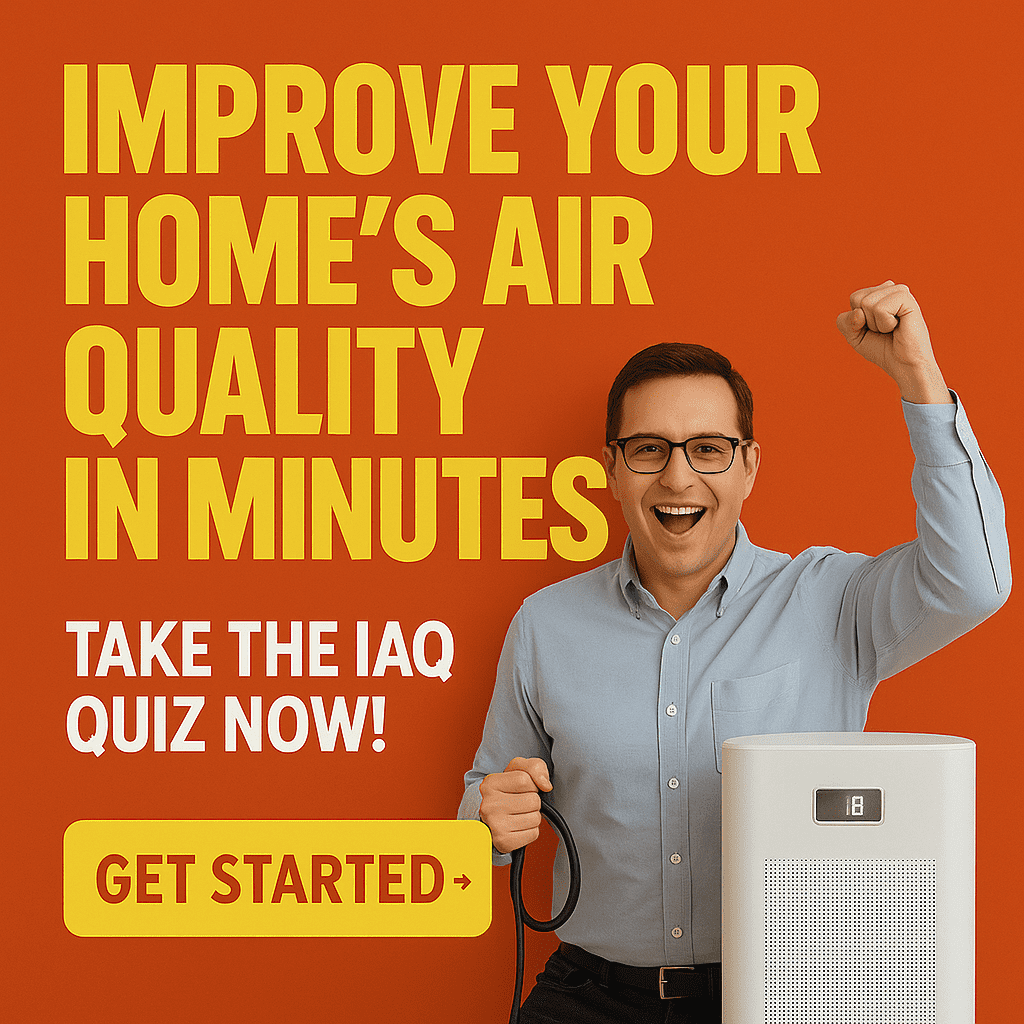Air pollution is a pressing public health issue. The World Health Organization cites poor air quality as one of the most critical environmental health threats today. Research continues to prove that air pollution is not solely an outdoor air quality issue, nor focused within major metropolises or industrial areas as once assumed. Rather, the data continues to show how air pollution—both indoors and out—is a significant health risk for all. Exposure to poor indoor air quality in particular is attributable to more than 5 million premature deaths globally, every single year. That figure alone should explain why indoor air pollution control is crucial.
How Can We Prevent or Minimize Air Pollution?
The best way to prevent or minimize air pollution is to control air pollution. This is particularly true for indoor spaces. Preventing and minimizing indoor air pollution is, at least in theory, as easy as indoor air pollution control.
While there are multiple air pollution definitions, the key points are the same. Air pollution is the presence of one or more contaminants in the surrounding air in such quantity or duration that it can be harmful to humans, animals or the environment. The industry-recognized definition of acceptable indoor air quality is air in which there are no known contaminants at harmful concentrations. All in all, indoor air pollution is the presence of harmful and unhealthy contaminants in the surrounding air.
It’s the quantity-duration aspect that really matters. Potential adverse health effects, comfortable and enjoyable indoor spaces and the quality of those spaces depend not solely on whether indoor air pollutants are present—but on how much and for how long one is exposed. Air pollutants are less harmful if you can reduce the exposure time or the concentration of pollutants, or both! This is why indoor air pollution control methods matter.
How Can We Control Indoor Air Pollution?
There is a seemingly endless number of IAQ products, HVAC solutions and recommendations out there to improve indoor air quality. This has never been more true than today, as the pandemic thrust IAQ into the spotlight and it continues to be an extremely popular topic. Nevertheless, all products, strategies, tips and tricks can largely be categorized into five indoor air pollution control methods.
5 Clean Air Strategies for Indoor Spaces
The five clean air strategies, while different in application, all work toward the same goal: To improve the quality of air in an indoor space. Implementing one, multiple or all of the five IAQ control strategies provides cleaner, healthier, safer indoor air. Let’s break them down.

1. Source Control
The most effective way to control indoor air pollution and improve indoor air quality is to eliminate the source of pollution altogether. This is the main objective of source control. Often, source control or source management is the first step and top recommendation among experts. Why? When it comes to eliminating indoor air pollution, source control is one of the easiest, least expensive and most effective strategies available.
How It Works
The goal of source control is to fully eliminate the source(s) of pollution. Source control is a multi-step process of identifying and then targeting said sources either by avoiding, adapting or removing the source entirely.
Examples of source control include burning candles with the windows open, taking shoes off before entering your living space or opting for nontoxic household cleaning products. They are simple yet conscious changes in your daily habits and indoor living practices. Selecting nontoxic, low-VOC/low-emitting, minimal odor products makes a huge difference in the number of air pollutants entering your home in the first place. Routine cleaning, seasonal HVAC system maintenance and healthy home habits also help reduce pollution sources.
Benefits
- The minimal price tag. Cleaning more frequently and simple habit shifts are inexpensive options compared to system upgrades and add-ons.
- Source control measures are relatively easy to implement. Sometimes, depending on the source, source control is even immediate! Meaning you can start creating a healthier indoor environment today.
- This control strategy is incredibly effective once you identify the source and have a clear means of removing the source. After all, source control addresses and eliminates the root causes of IAQ issues.
Keep in Mind
- Pollution control at the source is only possible once you identify the source. This is obviously not a viable method until you determine the origins of air pollution in your space.
- It’s the easiest IAQ control method in theory, but this strategy does require commitment, especially in the beginning to research alternative cleaning products or get into the habit of storing chemicals outside of the home.
- Certain sources are, of course, out of your individual control. If you live near a power plant, there is little you can do in the short term to reduce industrial emissions.

2. Ventilation
More than likely, at some point since the start of the pandemic, someone somewhere has explained the benefits of fresh air ventilation to you. Increasing ventilation is still one of the top pandemic suggestions for indoor spaces. As it should be! Ventilation dilutes indoor air. It quite literally lessens the concentration of indoor air pollutants—viruses and dust mites alike. Increasing fresh air ventilation is key to healthy indoor air quality.
How It Works
At its core, ventilation is the exchange of outdoor and indoor air. Increasing ventilation results in a greater influx of fresh outdoor air which dilutes indoor air pollution and forces stale, polluted indoor air out of the space. As an IAQ control strategy, improved ventilation means increasing the amount of ventilation and improving the quality of ventilation. This is possible through mechanical ventilation.
Rather than relying on natural ventilation like open windows, mechanical ventilation is a whole-home or whole-building solution. It is an add-on system upgrade that installs directly into a central HVAC system. Using ductwork already in the structure, or with additional ductwork, a mechanical ventilation solution provides fresh filtered air. Compared to natural ventilation, a mechanical fresh air system is not dependent on weather conditions, outdoor temperature or safety concerns. It’s also the superior fresh air solution because the system filters the incoming air, removing contaminants before circulating the air indoors.
Benefits
- Fresh air dilution is the solution to pollution. Increased ventilation rates mean improved air exchange and air turnover rates … AKA air pollutants are forced out of the indoor space quicker.
- Ventilation should not depend on outdoor air quality or the feasibility of natural ventilation. A mechanical ventilation system serves as a dedicated source of fresh and filtered air.
- The best balanced whole-home mechanical ventilation systems are also energy recovery systems. HRVs and ERVs both use a heat exchange/energy recovery process to pre-condition the incoming air. This energy savings is a helpful benefit and can actually lower utility bills.
Keep in Mind
- Mechanical ventilation systems will require occasional maintenance. Similar to other aspects of your home’s HVAC system, a contractor should check the system to ensure healthy IAQ and most importantly, to change the filter in the mechanical ventilation unit when needed.

3. Filtration
Perhaps the most well-known IAQ control solution, air filtration is an HVAC system mainstay. Every central HVAC system requires an air filter. So, if a filter is central to your home’s system, how can it also be an indoor air pollution control method? The quick answer: the quality of your home air filter matters.
How It Works
Air filters reduce indoor air pollution by capturing and eliminating indoor air pollutants, thus preventing contaminants from circulating throughout the space.
Basic HVAC filters do little to nothing to improve indoor air quality. Their sole purpose is to prevent the HVAC system from dust and debris buildup. In comparison, a high-efficiency pleated media air filter protects the HVAC system while also effectively improving your home’s indoor air quality.
 Home Air Filters: Looking for more about air filtration? Check out our helpful guide that sums up home filter types, MERV ratings and how to choose the best filter for your indoor space. Read more →
Home Air Filters: Looking for more about air filtration? Check out our helpful guide that sums up home filter types, MERV ratings and how to choose the best filter for your indoor space. Read more →Benefits
- Filtration is a pollutant removal method. As pollutants travel through your home’s ductwork and pass through the filter, they are quite literally filtered out. This eliminates the possibility of contaminants further spreading throughout your home.
- The better the air filter (higher MERV rating, higher quality material), the more it improves the health of your home. Higher-efficiency air filters not only capture smaller-sized particles, but they also more efficiently capture larger particles.
Keep in Mind
- Filter maintenance is important! How often you should check and/or change your home’s filter depends on a few factors. But the key point is that effective air filtration requires routine filter maintenance.

4. Purification
Clean, healthy air is pure air. The right air purification solution can make a huge difference in your home. There are many different air purification technologies, processes and devices out there. Purifiers vary greatly in price, efficacy, consumer trust, size and capability. With regard to purification as an indoor air pollution control method, purifying your home’s indoor air enhances the indoor environment and improves indoor air quality.
How It Works
An air purifier’s effectiveness depends on how much air it can treat and how well it collects or removes pollutants from the air. Most air purification solutions work in one of two ways. They either add something to the air that helps remove pollutants or they capture and remove contaminants while moving air through the device.
A majority of portable devices utilize fans within the device to pull air into the system and capture pollutants as the air passes through. Similar to air filters, this technology effectively removes contaminants from circulation. The go-to recommendation for this type of unit is those equipped with HEPA level filtration. Portable devices are ideal for certain scenarios. But, with that said, all portable units are limited to the room they’re placed in.
In comparison, whole-home purification systems are installed into the central HVAC system and purify the air throughout the entire home. Most whole-home purification devices are also active air cleaning solutions. This means that rather than waiting for air to pass through to capture pollutants, this type of purification solution is also actively seeking out pollutants. An example is bipolar ionization which provides positive and negative ions encouraging air pollutants to clump together (easier to clean and filter out!).
Benefits
- Purification is also a pollutant removal method. Whether an active or passive purification solution, air purifiers greatly reduce the number of indoor air pollutants in your space.
- As an add-on air cleaning solution, having an air purifier helps foster a cleaner, healthier and safer indoor space.
Keep in Mind
- Not only are there lots of purifiers and purification technologies on the market today, there is also a lack of oversight when it comes to purification devices. With this in mind, trusted devices and manufacturers will offer testing information, air cleaning data and certifications or third-party verification. Read all about the importance of air purifier data here.
- Some purifiers rely on ozone production as a purification technique. Avoid these products. Today, some purifiers produce ozone as a byproduct. To ensure the safety of you and your family, choose purifiers that emit little to no ozone. This is another reason third-party data verification matters.

5. Humidity Control
Indoor humidity regulation is one of the more overlooked IAQ control strategies. Humidity often invokes imagery of hot summer nights. In reality, humidity control is simply adding or removing moisture from the indoor air. And, it’s actually critical to a healthy indoor environment.
Indoor relative humidity levels and certain pollutants share a direct relationship. Specifically, biological pollutants. Things like mold spores and dust mites thrive in high humidity. Their ability to grow and spread through the air depends on the humidity level. Germs and virus particles remain in the air longer, infecting more people, when indoor moisture levels are low. In fact, recent research shows that maintaining a healthy indoor humidity range helps reduce respiratory infections. Whole-home humidity control also means air pollution mitigation.
How It Works
As an indoor air pollution control strategy, whole-home humidity control involves either a humidifier or dehumidifier. The ideal indoor humidity range is 40–60%. Research shows this range is important for maintaining a healthy and comfortable living environment indoors. Whole-home humidifiers and dehumidifiers work to automatically maintain this humidity level. Like ventilation and purification add-ons, these solutions are also installed directly into the HVAC system, ensuring improved air quality and moisture control for the entire space.
Benefits
- Regulated indoor humidity levels prevent symptoms like worsening asthma, allergy and respiratory conditions as well as dry skin, chapped lips, frequent nose bleeds and sore throats.
Bonus Tip: Awareness & Monitoring
Perhaps not one of the main five indoor air pollution control strategies, but as a bonus indoor air quality tip, it’s practically another control method. Our bonus control tip is to increase air quality awareness and monitor indoor air quality.
Boosting awareness simply means learning and researching more about indoor air quality issues, health connections and how to intervene in your home. On a larger scale, it also involves advocating for the best air quality decisions, policies and regulations.
Monitoring indoor air quality also builds a greater air quality awareness. And greater awareness, like in so many aspects, is the true root of action. Taking the time to learn how polluted the average indoor space is and just how much the air we breathe affects our health and comfort makes choosing action and intervening in your space all the easier. Having a whole-home indoor air monitor makes this process effortless.
How It Works
Available IAQ monitors vary greatly in function, price and model style. There are beneficial countertop devices as well as central air monitor systems available. These in-duct solutions offer real-time data on indoor pollutant levels, temperature, humidity, airflow and more. And it’s all sent directly to a smartphone or tablet, making monitoring your home’s air quality quite simple.
Benefits
- Central air quality monitors notify about spikes in pollutant levels, which makes it possible to analyze high-polluting events or actions over time, notice air quality trends and better control your home’s air pollution.
Next Steps
In the end, there is no one-control-strategy-fits-all answer. Every indoor space, whether home, building, office, hospital, school or store, will have different priorities and different indoor air sore spots. And, more than likely, every indoor space would greatly benefit from a combination of all the IAQ control strategies. The best path forward is to determine what needs to be addressed first in your home. Recognizing the most prevalent air quality concern makes it easier to determine which indoor air pollution control method would help the most.
Make sure to check out our product recommendations to learn more about the whole-home solutions associated with each control strategy. Also, consider consulting an experienced home HVAC contractor with IAQ expertise to help determine the best solutions for your space. Contact us today and we can help you find a local expert.




